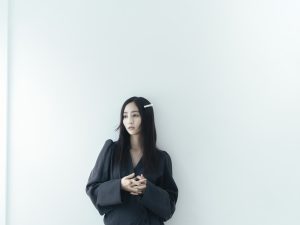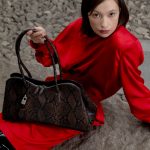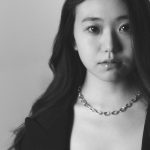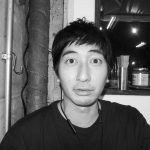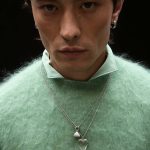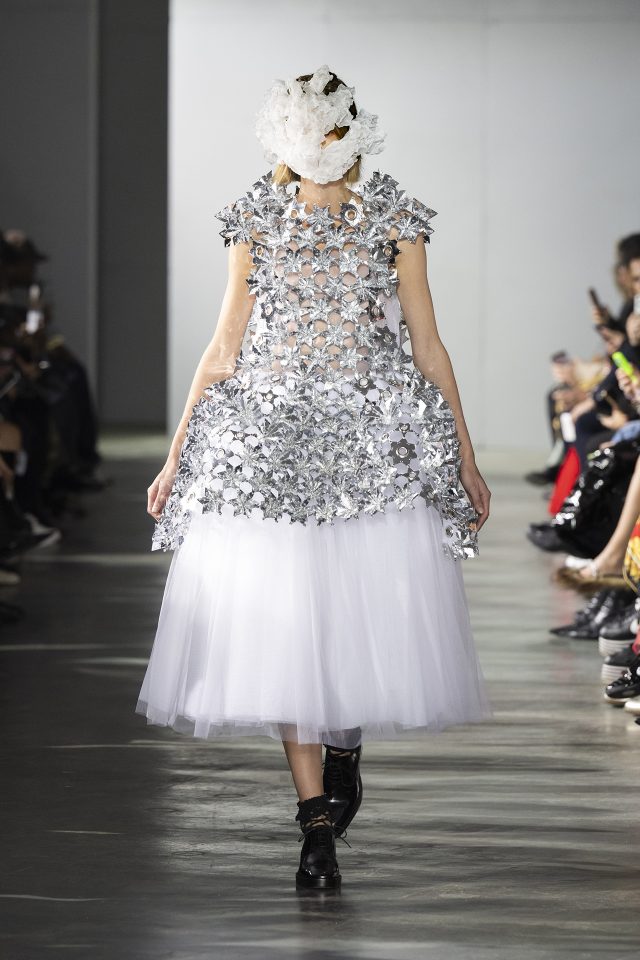UNIQLO (ユニクロ) 松沼礼インタビュー
News
UNIQLO (ユニクロ) 松沼礼インタビュー
Interview With Rei Matsunuma
日本国内のみならず海外でも積極的に展開し、日本のアパレルとして初のグローバル・カンパニーを目指すUNIQLO (ユニクロ)。今年9月には、BIC CAMERA (ビックカメラ) と共同で同社がグローバル繁盛店と位置づける新業態「BICQLO (ビックロ) 」を新宿にオープンし、より一層注目を集めている。
*You’ll find the English text after the Japanese.
日本国内のみならず海外でも積極的に展開し、日本のアパレルとして初のグローバル・カンパニーを目指すUNIQLO (ユニクロ)。今年9月には、BIC CAMERA (ビックカメラ) と共同で同社がグローバル繁盛店と位置づける新業態「BICQLO (ビックロ) 」を新宿にオープンし、より一層注目を集めている。
そして今年で10周年を迎えるTシャツ・ブランド「UT (ユーティー) 」。同ブランドは2002年にUNIQLOのTシャツ・プロジェクトとして始動し、国内外のアーティストや企業とコラボレーションをした独自性の高いデザインで高い評価を得ている。このUT事業に2004年から携わり、現在同プロジェクトのチームリーダーを務める松沼礼氏に話しをうかがった。彼は話題性のあるデジタルマーケティングの企画や、UNDERCOVER (アンダーカバー) との「UU (ユー ユー) 」プロジェクトの仕掛け人でもある。
—まずは松沼さんのバックグラウンドについて教えてください。
高校生のときに、姉の彼氏がPied Piper (パイド・パイパー) という洋服屋さんをやっていました。当時メンズ・ファッション誌の『MEN’S NON-NO (メンズノンノ)』で大きく取り上げられるような人気店でした。渋谷の並木橋にある本当に1坪くらいの小さなお店だったのですが、知り合いということもあって、そこで働くことになったんです。それまでは、郵便局のような、いわゆる高校生がやるようなアルバイトしかやっていなかったのですが、もっと新しいコトを経験したいというのもありましたし、姉の後押しもありました。高校の終わりぐらいからそこで働きはじめて、大学4年間はずっと学校に通いながら、そこでアルバイトをしていました。結局、6年くらい働きました。Pied Piperの他にも、A NEW SHOP (ア・ニュー・ショップ) という姉妹店がありまして、そこを行ったりきたりしながら販売員として働いていましたね。カリスマ・ショップ的な位置づけで、モデル、スタイリスト、タレントの方なども来られたりしていたんです。当時のアートシーンやストリートカルチャーなどを発信しているようなお店でした。
スタイリストやファッション業界の方々の出入りがすごく多くて、当時の自分からすると背伸びをした人たちと一緒に遊べるというのが、すごくたのしかったですね。人生の遊び方を全部教えてもらったような場所でした。大学3年生ぐらいからまわりのみんなが就職活動をはじめだして、徐々に内定とかも出はじめて、「どこ決まった?」みたいな感じでみんなわいわいしているところで、僕は「いまのところがたのしいからそのままでいいかな。」と思っていました。なので卒業後もそこでずっと働きながら、若手の販売員3人で企画をして週一で「ヤング・バー」というバーをはじめたりしていました。毎週末100人近く来るようなバーで、友達とお酒を飲みながら服を売ったり、イベントを企画したりしていました。企画をするということのおもしろさを覚えはじめていったのはそのころからだったと思います。それからファッションだけではなくてアートや音楽とか、デザイン関係のものとかに興味を抱くようになって、そういったことができるようなフィールドに行きたいという思いが出てきました。
以前から親しかった人がオーナーをしている小さなバーが代官山にありまして、一緒にオープニングを手伝って欲しいと頼まれて、次にそこで働くことになったんです。その年のフジロックで、本当においしいカレーを食べて、そのカレーを東京で売ったらものすごく売れると思い、カレー屋とアートギャラリーの融合をしようということで、韓国人の友達と二人でカレー屋を立ち上げました。Pied PiperやA NEW SHOPは辞めて、「ちょっとそっちの方で僕は生きていきます」と、まだまだ24歳の若気のいたりで言った記憶があります。
—UNIQLOに入るキッカケについて教えてください。
そのカレー屋は、すごくたのしかったのですが、お客様がぜんぜん来ませんでした。結局、2ヶ月ぐらいで店をたたむことになってしまいました。それから働いていたバーのつながりで、デザイン制作会社のアルバイトをするようになりました。ただ、ずっと時給生活というのも続けられないと思っていました。たまたま友達からUNIQLOがグラフィックやファッションがわかる人材を募集しているらしいと聞いて、UNIQLOの門を叩くことになります。
グラフィック・デザイナーとして入社したのですが、グラフィックは学校では学ばず、独学でした。友達がイベントをやるときにフライヤーを制作したりしてたくらいです。その頃は、勝手にCDジャケットを作って、それをタワー・レコードのCD売り場にさっと置いたりして。自分の作ったCDジャケットを“ジャケ買い”してくれるかどうかを観察していました。“万引き”ならぬ“万置き”と仲間うちで言ったりして。とにかく作ることが好きだったので、デザイン制作のプロジェクトに参加するような活動を個人的にやっていたところ、当時UNIQLOのデザイン室長であった方がたまたま自分の作品を見て、ほかの人との毛色の違いをおもしろいと思ってくださったみたいで、運よく入社できました。当時は文化服装学院やバンタンなどといった、いわゆるファッション系やデザイン系の学校を卒業している人しか採用していなかったとあとから知りました。
—入社してからの活動はどんなものでしたか?
UNIQLOに入社して一番びっくりしたのが、あのKeith Haring (キース・ヘリング) やAndy Warhol (アンディ・ウォーホル)、Barbara Kruger (バーバラ・クルーガー)などといった自分が昔から敬愛して、影響を受けていたアーティストたちと実際にコラボレーションをしていたことなんです。入社するまで知りませんでした。すごくやる気が出ましたね。Barbara Krugerは、特に好きなアーティストだったので、自分に彼女の作品を使ったTシャツ作らせて欲しいと頼みました。デザインといっても、彼女のアートワークをそのままTシャツに落とすという作業だけだったのですが、携わらせてもらえて光栄でした。あと、その商品のアプルーバルを取るときも、たまたま本人が来日していたので直接会うことができました。もう本当にうれしかった。いろいろと自分がやりたいことや、世の中にインパクトを与えられるようなことを考えていったら、この会社にはすごいチャンスがあるのではないかと思ったのはそのときです。
—UTの前から結構コラボレーションはやっていましたよね?
そうですね。入社する前は、モノを作っても、自分の周辺の限られた範囲にしか影響は与えられなかったのですが、UNIQLOで作ると、日本中の人の目に触れるようなモノとして世の中に出ます。将来的には世界中の人の目に触れることもある。それでグローバル展開を考えている会社でモノ作りをするというのは、非常に意義があることだと思いはじめました。一方で当時のUNIQLOは、特にメンズウエアはそうでしたが、ファッション誌ではあまり扱われていませんでした。フリースブームが過ぎ去ってから、“ユニバレ”という言葉が流行したり、日本ではUNIQLOは別にかっこいいというわけではなくて、安くて悪くないそれなりのモノが買えるというのが一般的な認識でしたね。自分の回りでおしゃれな印象の人はまず着ていなかったと思います。
自分が入ったからには、そういうイメージを払拭できないかと考えました。当時メンズのTシャツは企業コラボやアートもの、一部のキャラクターものが多かったので、当時の日本を代表するスタイリスト10人集めて、その人たちに「これが俺のTシャツだ」という企画でTシャツをデザインしてもらうことにしました。メンズのファッション誌は編集者でもモデルでもなく、スタイリストの人たちが誌面を作っているので、取り上げてもらうならスタイリストをきっかけにしようということが企画の根底にありました。スタイリストの人たちもTシャツをデザインするということで盛り上がってくれるし、それが何万点という規模で売れるということで、モチベーションも高まるだろうと。僕たちとしても、UNIQLOの新しい側面を出せるのではないかと思っていました。一人ずつ会いに行き、こういう思いでやっていきたいのですが、いかがですか?と話をしたら、皆さんからおもしろいと言ってもらえました。スタイリストの人たちもみんなライバル意識があるようで、「あいつには負けたくない」とか、「俺のが一番売れるようにしたい」とか、本当にひとつひとつのデザインにこだわりをもって作っていただけました。結果、本当にかっこいいTシャツができあがってうれしかったですね。
一番最初に『HUGE (ヒュージ) 』で大々的に扱ってもらえるようになりました。UNIQLOがハイエッジなファッション誌『HUGE』に出るなんて、当時はあり得ないことでしたし、スタイリストの人たちもそれまでこういうプロジェクトには参加したことがなかったようで、「なんかユニクロやるじゃん」と評価してもらえました。結果的にこのプロジェクトのTシャツはよく売れて、若い人たちのUNIQLOに対する意識も少なからずそこで変わったのではと思いますね。それからはデザイン以上に企画やコンテンツを考えることに夢中になりました。UNIQLOのブランディングにもつながって、売上にもつながるということで、いろいろと挑戦しましたね。
—企画モノはすべて担当なさっているのですか?
UTを中心に大半は僕が担当しています。2010年からデジタルマーケティングの方も。「UNIQLOOKS (ユニクルックス) 」が一番最初で、その後はチェックインの企画、「LUCKY LINE (ラッキーライン) 」や「WAKE UP (ウェイクアップ) 」、最近でいうと、Novak Djokovic (ノバク・ジョコビッチ) 選手と立ち上げた「Clothes for Smiles (クローズ・フォー・スマイルズ) 」というCSRのプロジェクトもそうです。
—デジタルで仕掛けるというのは、大きい軸でいうとどのような目的があるのですか?
僕が関わりはじめたのは2010年以降で、『Facebook (フェイスブック) 』をはじめ、『Twitter (ツイッター) 』などと世界中で何億人というユーザーがいるプラットフォームとしてSNSが出現して、個人がメディア化していく時代です。僕がデジタル戦略に関わりはじめたときに思っていた課題のひとつに、「UNIQLOからの情報は、正しく太く魅力的にお客様に伝わっているか?」というのがありました。ブランドの情報が太く、広く、きちんとお客様に伝わっているのかどうか。そして伝えた情報が、UNIQLOを介在せずともお客様同士で伝えあってもらえるようにしていかないと、より多くの人に伝えることができないとも思いました。一方的に企業の方から伝えたい情報を伝えるだけではなくて、お客様にそれをその方自分の言葉で別の方に伝えてもらうことによって、UNIQLOに対する共感や信頼が非常に増すのではないかと思っています。成功事例として、UNIQLOが認知されていない国や地域でも、日常的に使えるツールとして普及した「UNIQLOCK (ユニクロック) 」があります。時計という日常的に必要な機能と、ダンスと音楽という言葉を必要としない表現方法がミックスされいて、「何だこれ?」とおもしろがってってもらってたのでしょう。同時に「これを提供しているのは日本の洋服ブランドらしいぞ」というふうに、UNIQLOに対する興味を喚起できたと思います。
—プロジェクトの成功や失敗はどう計っていますか?
「LUCKY LINE」や「UNIQLOOKS」、「Facebook」のチェックインを使った施策にしてもそうですけど、どれだけ参加してくれたかどうかが一つの指標ですね。「LUCKY LINE」については、台湾のオープン時に63万人が並んでくれました。チェックインに関しては、その当時の『Facebook』ユーザーの8人に1人にあたる約20万人がチェックインしてくれました。『Facebook』活用のアジア圏におけるの先進事例として、UNIQLOのことを紹介させて欲しいと言っていただいたりして。逆に人に見られていないというものは失敗だと思います。お客様が見たい動機や参加したい動機というのが明確でないものは、失敗しますよね。要は作り手のエゴでかっこいいものを作っても、見られないということ。見たくなるような、参加したくなるようなキッカケというのが絶対に必要なので、そこを大事にしないと企画は失敗すると思っています。よくある例で言うと、「〇〇の商品を売りましょう」というときに、「とりあえずスペシャル・ウェブサイトでも作ろうよ」みたいなモノです。ただスペシャル・ウェブサイトを作ったところで、お客様にとっての僕たちの玄関はあくまで「uniqlo.com」であって、そここそが企業のブランドを伝える看板でもあり、お店であり当為ことです。お客様は、服を買いに来ているということが前提ですから、お客様にとってその情報というのは本当に必要なものかどうかということが重要です。こちらが必要な情報だと思ってやっていても「そんな情報いらないからすぐに買いたいんだ」と思われたら、それは余計なモノです。やはり見られないですよね。「なぜあのお客様はそれを見たくなるのか」というところを、深くたどって考えていなければ、よいモノにはならないと思います。
—「UNIQLO WAKE UP」に関して、商品販売数のような指標はあったりするのですか?
「UNIQLO WAKE UP」はまったく考え方が違いますね。グローバル・ブランディングというか、UNIQLOをグローバルで知っていただくためのコミュニケーション・ツールといった位置づけなので、別に「UNIQLO WAKE UP」によって、直接的に売上をアップしましょうというものではないです。これから僕たちが新規出店していく国において、「UNIQLO? あー、あの『WAKE UP』っていうのを出してたところ?なんかユニークで革新的なところだよね。おもしろそう」というふうに思ってもらうことが狙いです。実際の店舗がオープンする前に、人の期待を高めて行くような、時間と距離を越えた効果があると思うんです。世界中に「UNIQLO」という名前が伝わっていくことが、結果的に商売を大きくすることになると思います。
—ひとつひとつのキャンペーンに、著名なクリエイティブ・ディレクターやアート・ディレクターが関わっていると思いますが、どういう進め方をされているのですか?
会社が持っている経営課題やデジタルにおいての課題というのは、日々刻々と変わります。あるときの課題が、半年後まったく同じ課題のままだとしたら、それは企業が成長していないということになると思います。課題が都度あるごとに、専門の方たちとコミュニケーションをとっています。毎週そういった方たちとのミーティングを設けていて、特定の議題がなくても、いまの世の中はどのような感じなのだろう、UNIQLOはいまどのような感じなのだろうというふうにお互いに考えを出しあったりしています。他の会社さんもそうかもしれないですけど、新しいお店を開くときは、今回のBICQLOがその例にあたりますが、プロジェクト・ベースで動いたりもします。オープン時にお客様の来店を最大にするため、マス広告からデジタルも含め、総動員してやるわけです。そのときに「これを達成したい」というのが明確にあるので、それに対してのソリューションを提案してもらったりしています。
—商品の話になりますが、UUは松沼さんが担当されているのですか?
僕は、最初の部分と、マーケティングの部分で一部携わりました。僕の担当しているUTもそうですけど、世界中の企業や才能ある人とコラボレーションを行うということは、UNIQLOの新しい側面を見せることにもなりますし、旬な話題を世の中に提供することにもなります。当時は、日本の才能あふれる人たちとなにかできないか?と、会社の中でもごく少ない人数で話し合っていました。UNIQLOは日本初のグローバル・ブランドになろうしていますし、日本の才能と組むことによって、「メイド・イン・ジャパン」「フロム・ジャパン」のモノを世界に提示していきたいと。そこでUNDERCOVERを真っ先に思いつきました。過去で言えば、デザイナーJil Sander氏とのコラボレーションは、究極の美意識あるファッションを追求をしていました。しかしUNDERCOVERとは、日本発で今の時代の新しい家族像を提案し、そのようなファミリーに向けた洋服を作っていこうということになりました。子ども服も含めて。子ども服はすぐ売り切れてしまいましたね。僕もオープンの日に行きましたけど、すぐなくなっていました。
—デジタルとファッションの今後の関わり方の理想像を教えてください。
ファッション、衣類というのは、衣食住というくらい本当に毎日着るものでもあるし、毎日人が接するポイントでもありますよね。デジタルもいまやもうみなさんスマートフォンを持たれていて、家でも外でも、どこでも情報が入手できるようになっています。個人がなにかを発信したい場合も、スマートフォンを使えば、いろいろなことができるようになっていきますよね。UNIQLOで働く僕たちは、日々の生活をよりよくするような革新的な衣類を提供して、世界中の方によろこんでもらいたいと思っているので、デジタルと非常に親和性があると思っています。服を着ているとさまざまなことが日常の会話の中で出てくると思うのですが、僕が担当しているUTに関しても、グラフィックTシャツというのはTシャツの中でも一番メッセージ性が高く、自己表現のツールであるかなと思っています。あるバンドのTシャツを着ていたら、「そのバンド好きなの?」というふうな会話が普通に出てきたりしますよね。Tシャツは人と人をつなげるコミュニケーション・ツールにもなるわけです。そこにデジタルの要素が加わることで、新しいTシャツの着方や使い方、遊び方が生まれるのではないかと思っていますが、いまはまだ答えは見つかっていません。またいろいろとやるうちに見えてくるかもしれません。
—UNIQLOでいま一番宣伝したいことはなんですか?
UNIQLOのモバイル会員ですね。アプリとメルマガを中心に会員の方のためだけにお得な情報を伝えています。さきほどの話とも繋がりますが、アプリをお客様とユニクロをつなぐ媒体にしたいと思っています。いまはまだお得情報が中心ですが、このアプリを持っていると便利だとか、日常の生活がたのしくなるとか、もう究極を言うと、UNIQLOアプリを使いたいからスマホに変えたいというぐらいのレベルにもっていきたいですね。そういうようなお客様にとってすごく価値のあるサービスやコンテンツが開発されてきたら、おのずと人は集まって来てくれるのかなと思っています。日本はもとより世界中でそのようなファン層を拡大していきたいですし、このアプリを通じてお客様とワンツーワンで深く長い付き合いができると思っています。まずはぜひダウンロードをして、会員になっていただきたい (笑)。
海外でも一部の地域ではアプリをやりはじめていますが、まだまだぜんぜんです。やはり日本で土台となるプラットホームをまず作って、それを海外に移管していくというやり方になると思います。あと「Clothes for Smiles」にも力を入れています。今年の10月11日にプロテニスプレーヤーのNovak Djokovic選手と一緒に立ち上げたプロジェクトなのです。世界中の子どもたちの夢と希望をかなえるためのアイデアを世界中から募集して、HEATTECHやLIGHT DOWN (ライトダウン) などの購入金額の一部を基金にあてます。総額10億円ベースのプロジェクトで、世界中の子どもたちに夢と未来と希望を与えるようなものであれば本当にどんな内容でも投稿可能なので、ぜひ投稿していただきたいと思っています。
—最後に、松沼さんがおすすめのブランドやショップを教えてください。
・DELUXE (デラックス)
僕の義兄がやっています。トラッドをベースにした、ベーシックでスタンダードな服作りをしており、30代半ばの自分にあった、着ていて気持ちのいいブランドだと思います。僕も年齢とともに、少し落ち着いた感じに見えるような服を好むようになってきました。このブランドの服を着ていると自分の意識感覚が高まる気がします。
・PR Bar (PIEDPIPER REBARTH PROJECT BAR)
住所: 東京都港区北青山2-12-35 タートルストーンビルB1
Tel: 03-6434-5727
この秋にオープンしたばかりのPied Piperがやっているバーで、自分の若かりしころにいろいろと遊びを教えてもらった人たちが集まっています。繰り返し行きたい場所ですね。店長がユニークです。
・串若丸
住所: 東京都目黒区上目黒1-19-2
Tel: 03-3715-9292
自宅の近所で、創業20年以上の老舗の焼鳥屋。値段がリーズナブルで、お肉は大きくて食べ応えがある。ここの焼鳥は本当に美味しいです。家族そろってしょっちゅう通ってます。
<プロフィール>
松沼礼 (まつぬま れい)
2002年 法政大学 法学部法律学科卒業
2003年 グラフィックを独自に学び、イベントフライヤーデザインなどを手がける
2004年 ユニクロにグラフィックデザイナーとして入社
2007年 UT STORE HARAJUKU.の立ち上げプロジェクトに参画
2007年 ユニクロUTデザインチームリーダー
2008年 ユニクロUT事業チームリーダー
2010年 ユニクロデジタルマーケティングチーム リーダーを兼任
2011年〜 多数のデジタルプロジェクト / UTコンテンツを企画、発表
In order to become Japan’s first global apparel company, UNIQLO has been actively expanding its business both internationally and domestically. UNIQLO recently attracted a lot of attention due to its joint project with BIC CAMERA. ‘BICQLO’, a new business referred to as a global prosperity shop, opened in September 2012. UNIQLO’s T-shirt brand ‘UT’ (which celebrated its tenth anniversary last year) is also a popular project highly rated for its unique designs created in collaboration with domestic and foreign artists and companies. Today, we interviewed the current team leader of this project, Rei Matsunuma, who has been involved in the UT business since 2004. He is also the mastermind behind sensational digital marketing projects and is the initiator of the ‘UU’ project with UNDERCOVER.
—Can you first tell us about your background?
When I was in high school, my sister’s boyfriend owned a clothes shop called the Pied Piper. At the time, it was a very popular store getting write-ups in the men’s fashion magazine ‘MEN’S NON-NO’. It was only a tiny shop – just over 3m2 – in Namikibashi, Shibuya, but since I knew the owner, I decided to work there. My sister played a part in encouraging my decision, but I myself wanted to experience something new as I had only ever worked at a post office and other typical high-school student jobs.
I started working at the end of high school and continued to do so during the four years I attended university. Altogether, I spent six years at the Pied Piper. It also had a sister store called A NEW SHOP and I went back and forth between them working as a salesperson. A NEW SHOP was a famous store popular with models, stylists and celebrities. The store was a kind of outlet for the art scene and street culture of that time. Many customers were stylists or somehow involved in the fashion industry and I remember having so much fun mingling with people who I thought were out of my reach. The store taught me all there is to learn about enjoying life.
In my third year of university, my friends began job hunting and gradually started receiving offers. Even though everyone around me was talking about who found what job, I didn’t feel like I needed to change my job because I was having so much fun. I continued to work there even after university, and together with two other young sales staff members, I began a bar called ‘Young Bar’ which we opened once a week. Almost one hundred customers came to the bar every weekend and we sold clothes and planned events while drinking with our friends. I think these experiences first got me interested in planning.
Eventually, I developed an interest in art, music, design and fashion. I began to wonder what it would be like to work in such fields. An old friend of mine was the owner of a small bar in Daikanyama and he asked me to help out with the opening, so I started working there next. That same year, I went to Fuji Rock. The curry I ate there was delicious and I was confident the curry would sell in Tokyo. Together with a Korean friend, I started a curry restaurant and we merged this with an art gallery. I quit the Pied Piper and A NEW SHOP. I remember telling them, “I’ll make a living going down this path.” I was only young, just twenty-four.
—Please tell us how you started working at UNIQLO.
The curry restaurant was fun, but we didn’t have many customers. In the end, we had to close down after two months. After that, I got a part time job at a design company from the connections at the bar I used to work at. However, I knew I couldn’t keep working on an hourly wage. My friend happened to tell me that UNIQLO were looking for someone with experience in graphic design and fashion, so I decided to apply. Although I got a job as a graphic designer, all my skills were self-taught because I hadn’t learned design at school. My only experience until then was making flyers for friends’ events. I used to design CD jackets and secretly place them on the shelves of Tower Records and see whether my cover design would entice anyone to buy the CDs. Between me and my friends, we used to say I was “shopdropping” as opposed to “shoplifting”. In any case, I loved to create things and was actively taking part in projects that involved design work on an individual basis. The general manager of design at UNIQLO back then happened to see my work and apparently liked the fact that it had a different feel to the works of others. Through sheer luck, I was given the job. Later, I found out that until myself, UNIQLO had only ever hired graduates from fashion or design schools such as Bunka Fashion College or Vantan.
—What sort of activities did you take part in after you entered UNIQLO?
What really surprised me upon entering UNIQLO was the fact that they were actually collaborating with artists who I worshipped and who had influenced me since my youth, such as Keith Haring, Andy Warhol and Barbara Kruger. I didn’t know this before entering the company and this really motivated me. Barbara Kruger is an artist I especially liked, so I asked whether I could do the design work for her T-shirts. Although it didn’t involve much design (all I needed to do was print her works on the shirts), I was honored to be part of the project. I even got to meet her in person when acquiring approval for the products because she was in Japan at the time. It was around then that I realized my goals in life and that my desire to leave an impact on the world could be achieved from the opportunities offered by UNIQLO.
—I understand you were doing collaboration work before UT?
That’s right. Before entering the company, whatever I made only affected those in a limited range around me. At UNIQLO, my work has the potential of being seen throughout Japan. It may even ultimately be seen by people throughout the world. I realized how meaningful it is to be a creator in a company that considers business on a global scale. On the other hand, UNIQLO clothing – menswear in particular – rarely made any appearances in fashion magazines at the time. After the fleece craze, the coined term ‘UNIBARE’ (people realizing your clothes are from UNIQLO) became popular. In Japan, UNIQLO wasn’t necessarily considered fashionable. Instead, UNIQLO products were commonly recognized as cheap clothes of reasonable quality. All the people around me who fell under the category of ‘fashionable’ never wore UNIQLO.
Now that I had entered UNIQLO, I wanted to get rid of this image. Popular men’s T-shirts back then included company collaborations and art and prints of certain characters, so I gathered ten representative stylists of the time and asked each of them to design a shirt under the concept of “This is my T-shirt.” Men’s fashion magazines are not created by editors or models but by stylists. The foundation of my plan was to use stylists in order to trigger write-ups in magazines. The stylists themselves would be excited to design their own T-shirts and the fact that their designs would sell in the tens of thousands would also be very motivating. We also felt this project would reveal another side of UNIQLO. I visited each stylist to explain our concept and all of them gave us a positive response. There was also rivalry between the stylists. Some didn’t want to lose to other particular stylists and some were determined to sell the most shirts. Each and every design was made with especial care. As a result, we were delighted with the quality of the T-shirts produced.
Our first big feature was in ‘HUGE’. Until then, it was unthinkable that UNIQLO would be featured in a cutting edge fashion magazine like ‘HUGE’. It was the first time that the stylists tooks part in such a project, so they were rather impressed. As a result, the T-shirts sold well and I feel the project had no small effect on changing the image of UNIQLO among the younger generation. After that, I became absorbed in the planning and content-building process of projects even more so than design work. Having learned that such projects not only help the branding of UNIQLO but also increase its sales, I engrossed myself in a variety of projects.
—Are you in charge of all of these projects?
I’m in charge of a large portion of the projects centered around UT, including digital marketing from 2010. The first project I worked on was ‘UNIQLOOKS’ and after that I was in charge of the check-in project. ‘LUCK LINE’, ‘WAKE UP’, and the recent CSR project, ‘Clothes for Smiles’ (which we started in collaboration with Novak Djokovic), are also part of my work.
—In general, what sort of targets do you have for the launch of the digital project?
I joined this project in 2010. This was a year in which SNS sites such as Facebook and Twitter became platforms for hundreds of millions of users around the world and individuals became media components. When I first started taking part in the digital strategy, I felt one of my tasks would be to judge whether the information transmitted by UNIQLO was correct, bold and attractive to its customers and whether or not the brand’s details were extensive and effectively reaching out. I also felt information needed to travel between customers without the intervention of UNIQLO in order for it to spread even further. Rather than a one-sided provision of information from the company, I assumed UNIQLO would gain more empathy and trust if the information were spread by its customers in their own words. A successful example is the ‘UNIQLOCK’. This became popular as a common tool even in countries and areas where UNIQLO is unknown. The mixture of the clock, a necessary function in everyday life, together with dance and music, expressions which don’t need words, probably got the user’s attention by simply making them think, “What the hell is this?” The fact that a Japanese clothes brand was the source of such a service subsequently aroused interest in UNIQLO itself.
—How do you judge the success or failure of a project?
In the cases of ‘LUCKY LINE’, ‘UNIQLOOKS’ and the check-in project on Facebook, our barometer is the number of participants For ‘LUCKY LINE’, 630,000 people lined up for the opening in Taiwan. 200,000 people participated in the check-in project and this figure amounts to one out of eight Facebook users at the time. UNIQLO was asked to be introduced as a successful example of Facebook branding in Asia.
Likewise, a lack of participants will result in the project being considered a failure. Anything that doesn’t motivate customers to want to see or participate will ultimately end up a failure. In other words, it doesn’t matter how good a product is. If it was plainly created by the creator’s ego, it wouldn’t even be seen. It is crucial to have a catalyst that motivates people to want to see or participate in the project. Otherwise, it will be a failure. An example of this is the common idea of building a special website to sell products. At the end of the day, even if we create a special website, the customer entrance to our brand is uniqlo.com. That should act as a signboard to advertise our company’s brand and also be the store itself. It is important to determine whether the information we transmit on the site is really useful to customers who are presumably visiting our site to buy clothes. Even if we as a company feel the information is necessary, it’s uncalled for if the customers think, “I don’t need that information. I just want to buy clothes.” Such content wouldn’t be seen. In order to create meaningful content, I feel it is necessary to define in detail why customers would want to see that content.
—Do you have a product sales index for ‘UNIQLO WAKE UP’?
‘UNIQLO WAKE UP’ is based on a completely different mindset. It is valued as a communication tool to expand the global awareness of UNIQLO and is not expected to result in the direct increase of sales. The objective of this project is to make people from candidate countries of future branches to think, “UNIQLO? Oh, the place that did WAKE UP. They come up with unique and creative stuff. Sounds fun!” I feel ‘UNIQLO WAKE UP’ has the potential of raising people’s expectations, regardless of time or distance, even before the shop is opened. Increasing the awareness of the ‘UNIQLO’ name throughout the world will subsequently lead to an increase in sales.
—Famous creative directors and art directors seem to be participating in every campaign. Can you tell us about the procedures involved?
Our company’s business and digital tasks change by the day and hour. If a task hasn’t changed at all over the period of six months, that would mean the company isn’t developing. Whenever a task emerges, we communicate with specialists. Every week, we set up meetings with these specialists. If there aren’t any particular tasks, we talk about the current state of the world or the current situation of UNIQLO. Other companies may follow similar procedures, but whenever we open a new store (as in the case of BICQLO), we basically carry out the process on a project basis. In order to maximize the number of customers for the opening, we execute an all-out advertising strategy from mass media to digital. In such a case, since we have a clear goal regarding what we want to accomplish, we consult our specialists and they propose methods of achieving that goal.
—With regards to the products, are you also in charge of the UU? (should this be UT?)
I took part in the startup and marketing strategy. The same can be said for the UT which I’m in charge of. However, collaborating with companies and talented individuals around the world not only shows another side of UNIQLO, but also gives us the chance to provide up-to-date information to the world. It all began with a discussion between a handful of company members about ideas for collaborations with talented Japanese individuals. UNIQLO is trying to become Japan’s first ever global brand and collaborations with Japanese talents will enable us to promote products that are “made in Japan” and “from Japan”. We came up with UNDERCOVER straight away. In the past, our collaboration with designer Jil Sander was a pursuit to develop fashion of supreme beauty. In the case of UNDERCOVER, we decided to target our products to families and to pursue the development of Japan-made clothes, including childrenswear, which represent the family image of the current age. The childrenswear sold out very quickly. I went to the launch on the opening date but there was already no stock left.
—What would be the ideal future relationship between the digital world and fashion?
Fashion and clothes are just as important as food and shelter. People wear them every day and they are factors that everyone has to deal with in life. The popularization of smartphones has made the digital world something from which people can access information regardless of where they are, whether they are inside or outside the house. Smartphones have also made it possible for any individual to transmit information in a variety of ways. It is the target for us workers at UNIQLO to please people throughout the world through the provision of revolutionary clothes that improve the standards of everyday life. Therefore, we feel a great deal of affinity with the digital. Clothes can spark up a variety of conversations in daily life. Among our T-shirts, the graphic UT T-shirt which I’m in charge of sends out the strongest message and can even be used as a tool for self-expression. If someone is wearing a band T-shirt, he would naturally be asked what he thinks of that band. T-shirts can also become a communication tool that connects people together. Although I don’t have a concrete answer yet, I feel the combination of T-shirts and digital tools could potentially generate new ways to wear, use or play with shirts. I may come up with something on the way.
—What do you currently want to promote about UNIQLO most?
This would be UNIQLO’s mobile membership. We transmit special exclusive information to our members via our application and e-mails. This connects with what I said earlier. Our plan is to use apps to connect customers with UNIQLO. At the moment, we mainly use the membership to send exclusive information. However, in the future, we would like to take it to the next level and create an app that is clearly convenient to have or that makes everyday life more fun. The ultimate goal would be to have people buy a smartphone for the sole purpose of using the app. If we succeed in creating such valuable services or content, people would naturally be attracted to this. We want to expand our fan base throughout the world as well as in Japan, and through the use of this application, develop a closer and longer one-on-one relationship with our customers. But before all this, we would like people just to download the current app and become a member. People have started using our application abroad too, but only in a limited amount of areas.
I guess it’s necessary to develop a stable foundation in Japan first and then transfer it abroad. We’re also putting a good amount of effort in ‘Clothes for Smiles’. This is a project we launched in collaboration with tennis player Novak Djokovic on October 11th, 2012. We’re collecting ideas on a global scale for ways to realize the dreams and hopes of children all over the world. A partial amount of our earnings from HEATTECH and LIGHT DOWN are going to the project funds. This is a billion yen project and we are open to any kind of idea that could offer such visions, futures and hopes to the children of the world, so please send us any ideas you have.
—Finally, please tell us about any brands or shops you recommend.
・DELUXE
This store belongs to my brother-in-law. They make basic and standard clothes based on traditional fashion. Now I’m in my mid-thirties, I feel this brand is fit for my age and is comfortable to wear. My taste in fashion has toned down a bit with age and I now prefer more conservative clothes. I feel this brand heightens my self-awareness.
・PR Bar (PIEDPIPER REBIRTH PROJECT BAR)
Address: Turtle Stone Building B1F 2-12-35 Kita-Aoyama Minato-ku Tokyo
Tel: 03-6434-5727
This is a bar that was recently opened by the Pied Piper last autumn. It’s filled with many of my friends who taught me how to have fun in life when I was young. It’s the kind of place I would like to keep revisiting. The bar manager is very unique.
・Kushiwakamaru
Address:1-19-2 Kamimeguro Meguro-ku Tokyo
Tel: 03-3715-9292
This is a yakitori restaurant with a history of twenty years near where I live. The price is reasonable and the chicken portions are generous and filling. The yakitori here is really tasty and I often go with my family.
Rei Matsunuma
